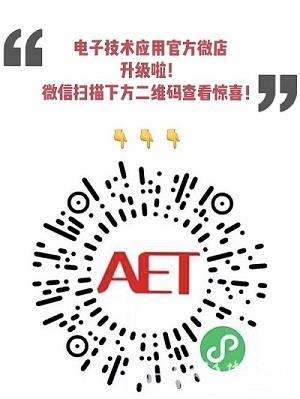可穿戴柔性连续动态血糖监测技术发展与挑战
电子技术应用
刘宇轩,曹超
山东大学 微电子学院,山东 济南250101
摘要: 糖尿病患者群体迫切追求能够精准控糖的高质量生活,迫切需要精准、舒适的血糖监测技术。然而传统指血法只能实现单次有创采血监测,无法满足需求。可穿戴柔性动态葡萄糖传感器作为下一代血糖监测技术的重要发展方向,在糖尿病管理方面拥有巨大的应用前景,是目前研究的热点。综述了近年来可穿戴柔性连续动态血糖监测技术的研究现状,探讨了可穿戴柔性血糖传感系统技术仍然面临的挑战与可能的突破方向,最后展望了可穿戴柔性血糖传感器商业化的趋势和未来的发展潜力。
中图分类号:TP212.3 文献标志码:A DOI: 10.16157/j.issn.0258-7998.234174
中文引用格式: 刘宇轩,曹超. 可穿戴柔性连续动态血糖监测技术发展与挑战[J]. 电子技术应用,2023,49(12):75-84.
英文引用格式: Liu Yuxuan,Cao Chao. Development and challenges of wearable flexible continuous glucose monitoring technology[J]. Application of Electronic Technique,2023,49(12):75-84.
中文引用格式: 刘宇轩,曹超. 可穿戴柔性连续动态血糖监测技术发展与挑战[J]. 电子技术应用,2023,49(12):75-84.
英文引用格式: Liu Yuxuan,Cao Chao. Development and challenges of wearable flexible continuous glucose monitoring technology[J]. Application of Electronic Technique,2023,49(12):75-84.
Development and challenges of wearable flexible continuous glucose monitoring technology
Liu Yuxuan,Cao Chao
College of Microelectronics, Shandong University, Jinan 250101, China
Abstract: The diabetic patient group urgently pursues a high-quality life which can accurately control blood glucose, and urgently needs blood glucose monitoring technology with high precision and comfortableness. However, the traditional finger blood method can only achieve a single invasive blood glucose monitoring, which can no longer meet the demand. As an important development direction of next-generation for blood continuous glucose monitoring (CGM) technology, wearable flexible blood glucose sensor shows great potential application prospects in diabetes management, and is hot research topic. This paper reviews the research progress of wearable flexible and CGM technologies in recent years, discusses the challenges and possible breakthroughs of the wearable flexible CGM technologies, and finally prospects the trend of wearable flexible blood glucose sensor commercialization.
Key words : diabetes;blood glucose monitoring;glucose sensor;wearable technology;flexible sensor
0 引言
我国是世界范围内糖尿病人口最多的国家,患病率高达10.9%,算上诊断率和糖尿糖前期的比例,我国有超过一半的人口目前或未来会受到糖尿病的困扰。随着我国老龄化社会加剧,60岁以上的患者将高达80%,每年超过100万患者死于糖尿病相关疾病[1];我国糖尿病患者呈现出三高三低的特点,即:发病率高、知晓率低;危害性高,治疗率低;增长率高,控制率低。糖尿病的监测与防治,目前已经成为关系国计民生的战略问题[2-3]。近年来国家出台了一系列相关的政策和文件,如《“健康中国2030”规划纲要》等,来促进和强化糖尿病等慢病的筛查与管理,加强风险评估[4]。
本文详细内容请下载:https://www.chinaaet.com/resource/share/2000005810
作者信息:
刘宇轩,曹超
(山东大学 微电子学院,山东 济南250101)

此内容为AET网站原创,未经授权禁止转载。

